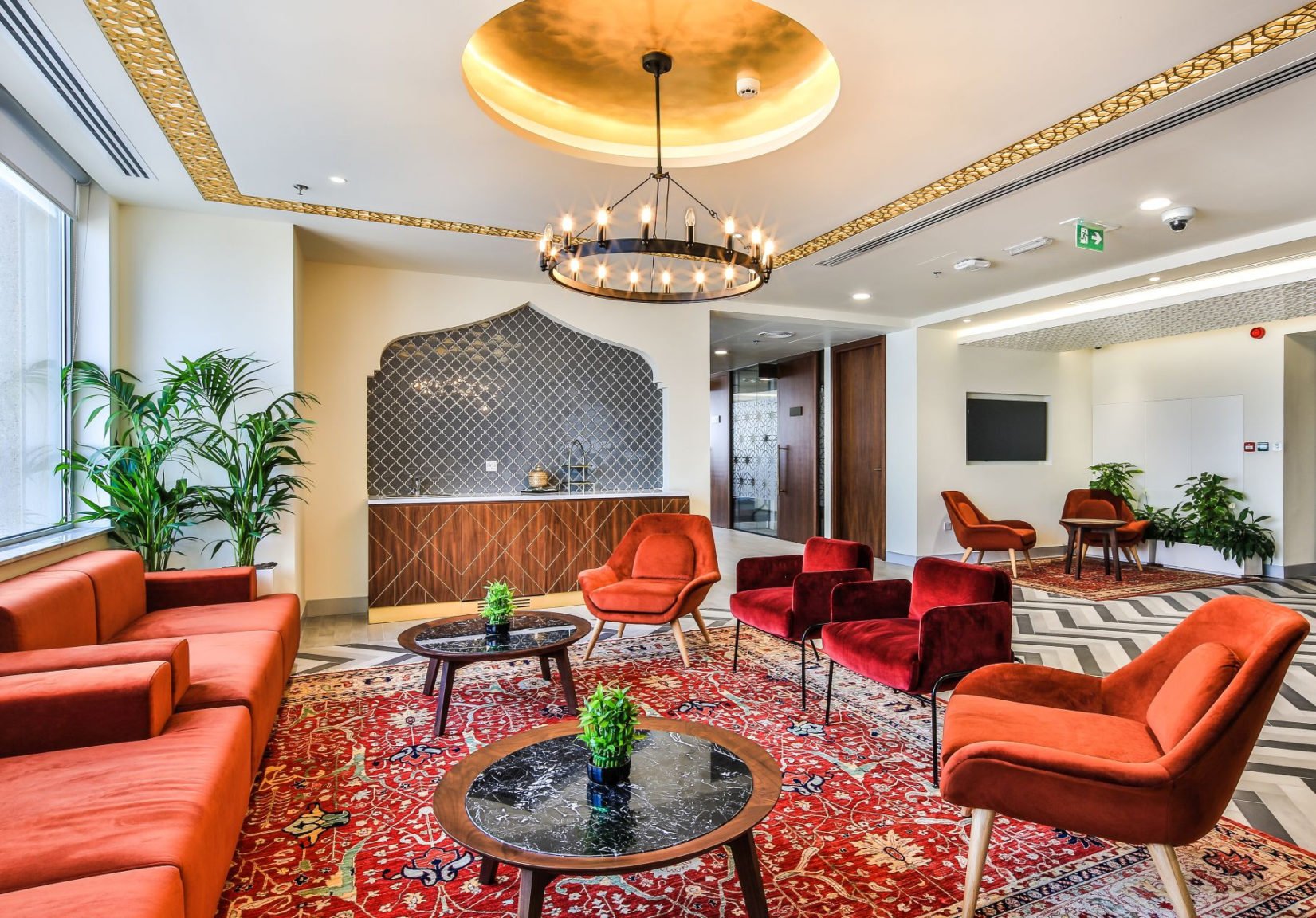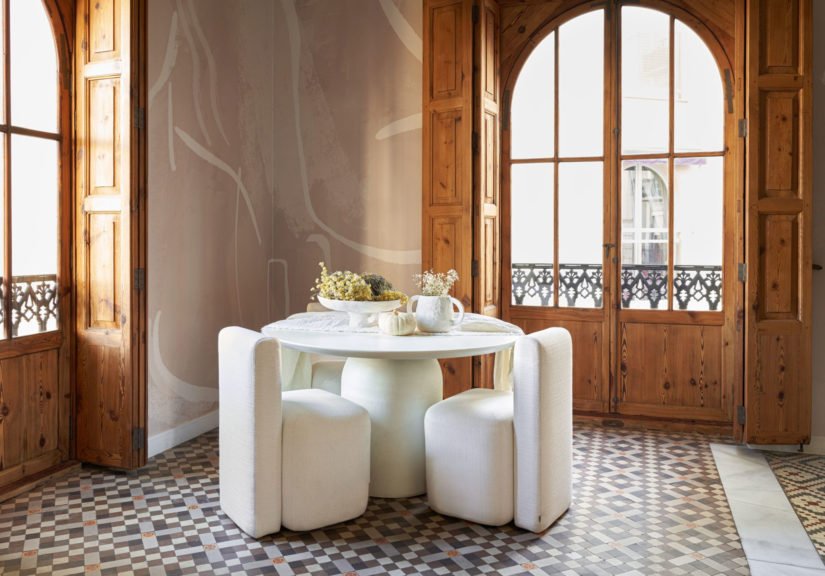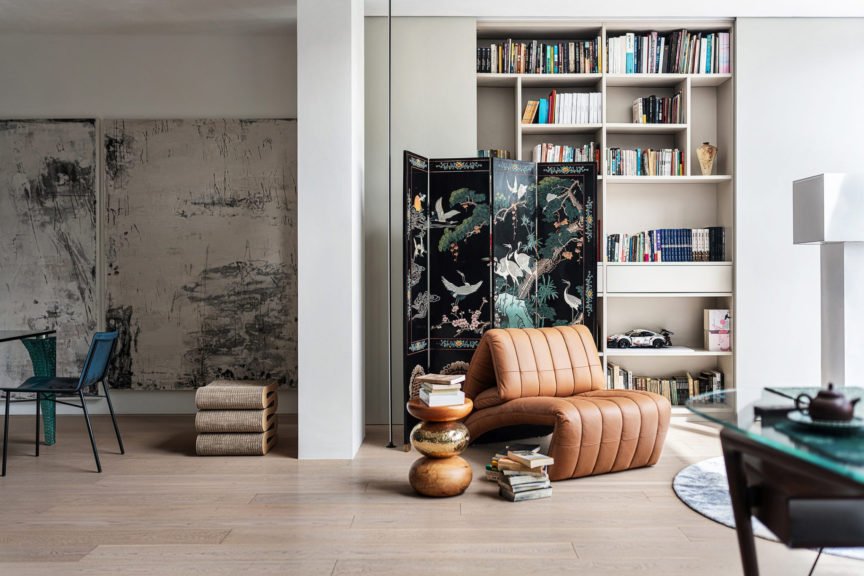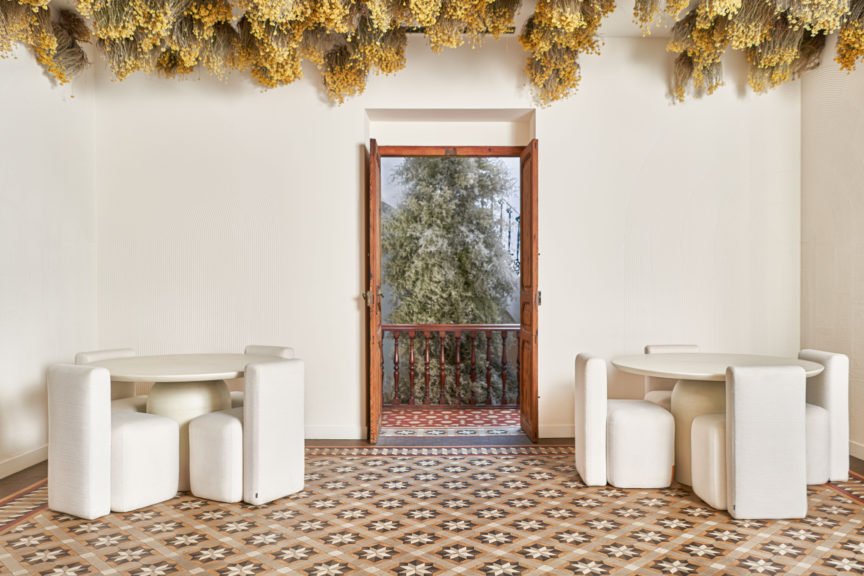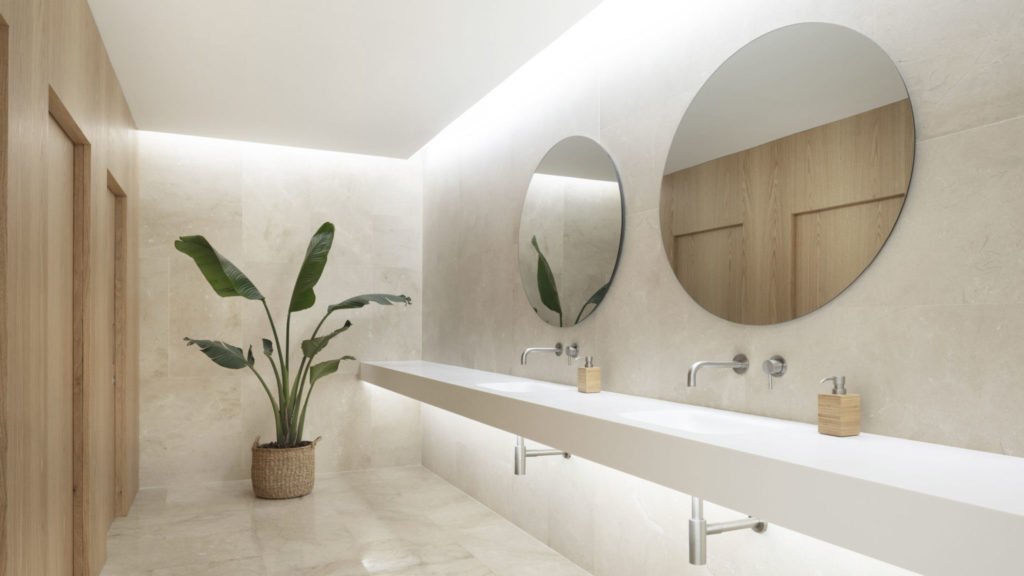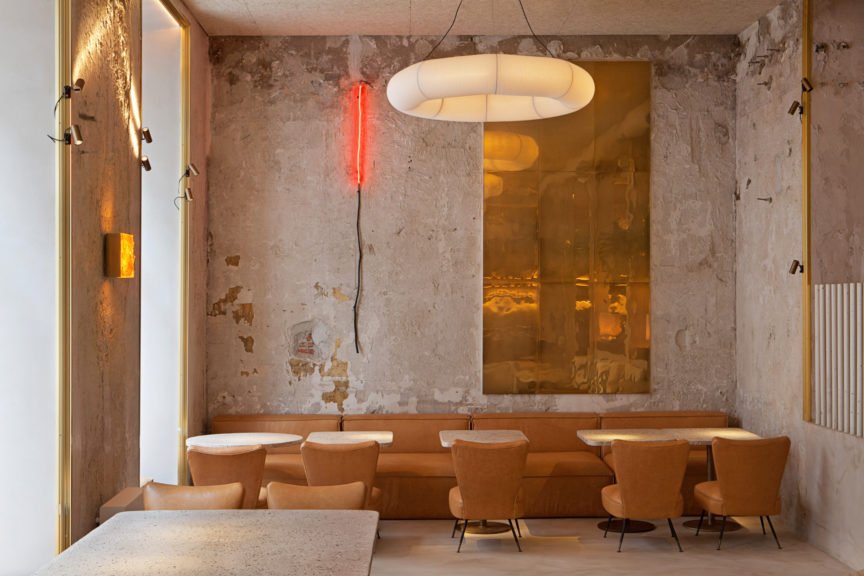Think Art Deco Interiors or Architecture, think New York’s towering Empire State Building. Miami’s iconic Delano Hotel (and an entire district!). The evocative Hoover Building in London. You look at them, and you look at them again. And they stay with you. Why is that? The answer is – Art Deco. Each landmark structure is a testament to the Art Deco movement, characterised by its blazingly bold embrace of modernity and meticulous craftsmanship. Constructed with luxurious materials and adorned with exotic motifs and patterns, they exude an unmistakable aura of sophistication and global influence. But what is Art Deco all about? In this article, we embark on a journey through the captivating world of Art Deco.
History: Painting the Past
Art Deco Interiors got retrospective recognition. Initially known as ‘Jazz Moderne’ or ‘le style moderne’, the term ‘Art Deco’ was coined only in 1968 through a scholarly appraisal of the design style. It gets its name from ‘Exposition Internationale des arts décoratifs et industriels modernes’ (International Exhibition of Modern Decorative and Industrial Arts), held in Paris in 1925. This pivotal event showcased the burgeoning design movement and provided a platform for its subsequent global dissemination.
Top: Delano Hotel, Miami (Image Credit); Hoover Building, London (Image Credit)
Bottom: Théâtre des Champs-Élysées (Image Credit); Imperial Hotel, Prague (Image Credit)
The Art Deco style first appeared in Paris just before World War I and truly flourished in America in the 1920s and 30s. When we talk about its origins, we can’t ignore that it emerged from a movement advocating recognition for artisans as ‘decorative artists’, giving them the same rights as painters and sculptors. The Society of Decorative Artists (SAD) catalysed the popularity of this modern decorative work, which then became the fountainhead of Art Deco.
As new materials like reinforced concrete flourished and awe-inspiring buildings like Théâtre des Champs-Élysées in Paris were built, the Art Deco interior design style picked up pace.
Key Features: Art Deco Interiors’ Shining Beacons
Capturing the zeitgeist of the early 20th century, the Art Deco interior design style was influenced by pre-World War I European styles, ancient Egyptian art, and various avant-garde movements like Futurism, Cubism, Functionalism, etc. Here are some of its key features:
1. Impressive Symmetrical, Geometric Shapes
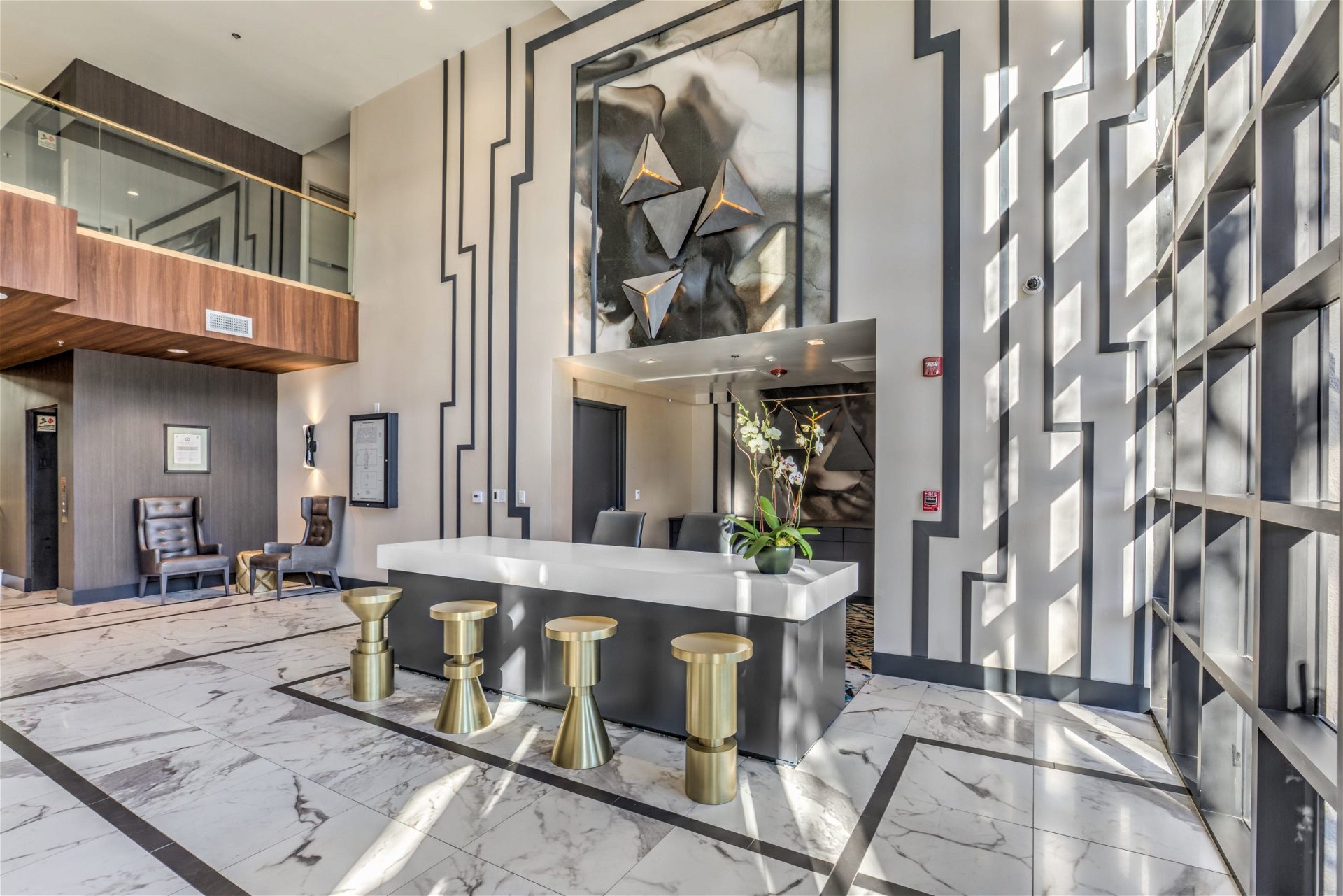
Veda Home, USA by Private Label International & DE Architects; Photography Credits: Neon Sun Photography
Chevrons, zigzags, and sunbursts, used in furniture, lighting fixtures, and decorative accents, form the core of interiors designed in the style. The elements in Art Deco interiors are streamlined, symbolising the machine age with clean lines and smooth surfaces. While the style, as is, is not in use today, its modern interpretation bears the same characteristics.
2. Luxurious Materials
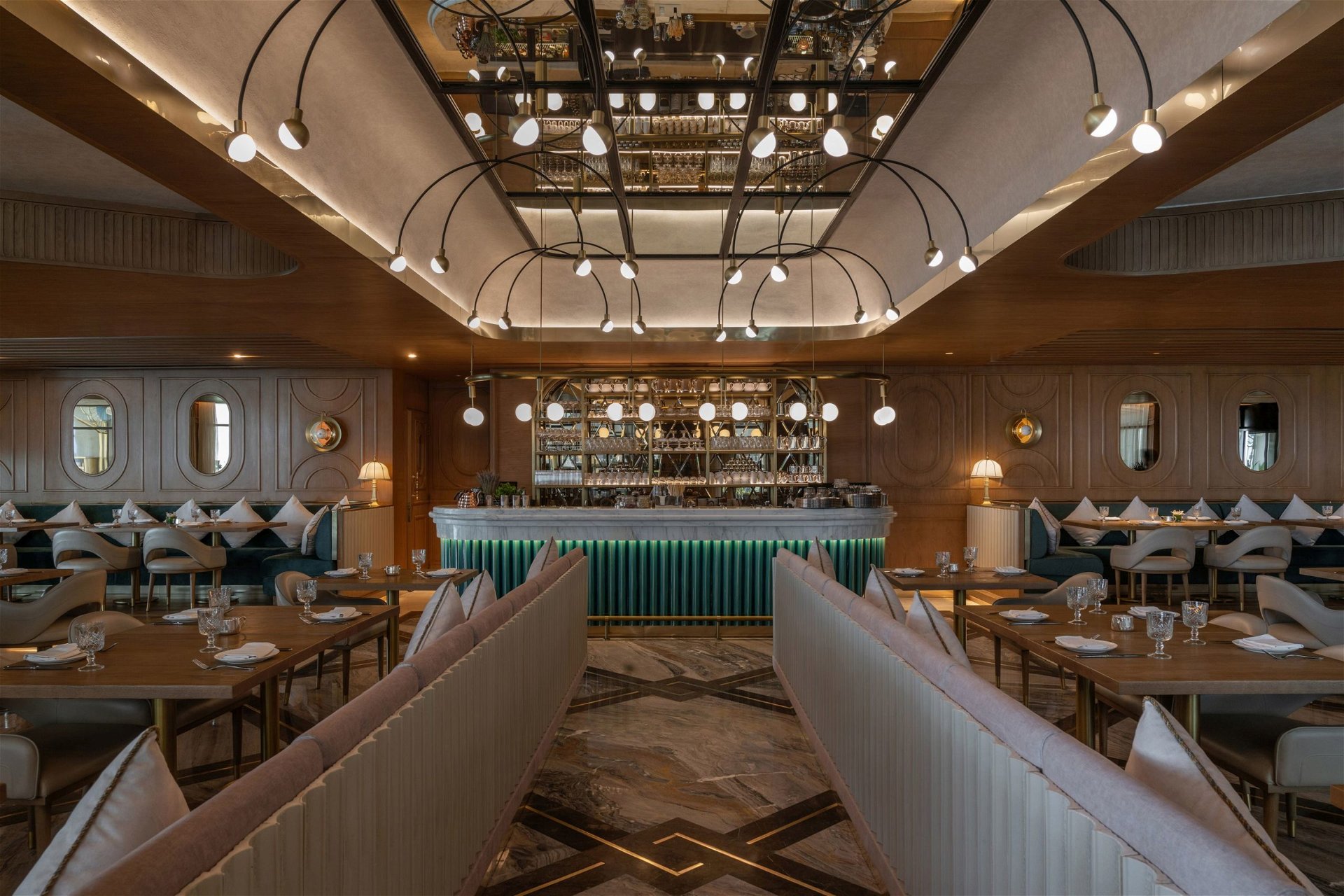
Belgravian Brasserie, Saudi Arabia by Forsite Creative; Photography credits: Natelee Cocks Photography
Art Deco is a playground where novel materials find their place alongside traditional opulence, crafting an atmosphere of unrivalled sophistication and timelessness. Exotic woods, lustrous marble, gleaming chrome, translucent glass, and reflective mirrored surfaces serve as the building blocks for creating design concepts that exude refinement and grandeur.
3. Jewel-tone Colour Palettes
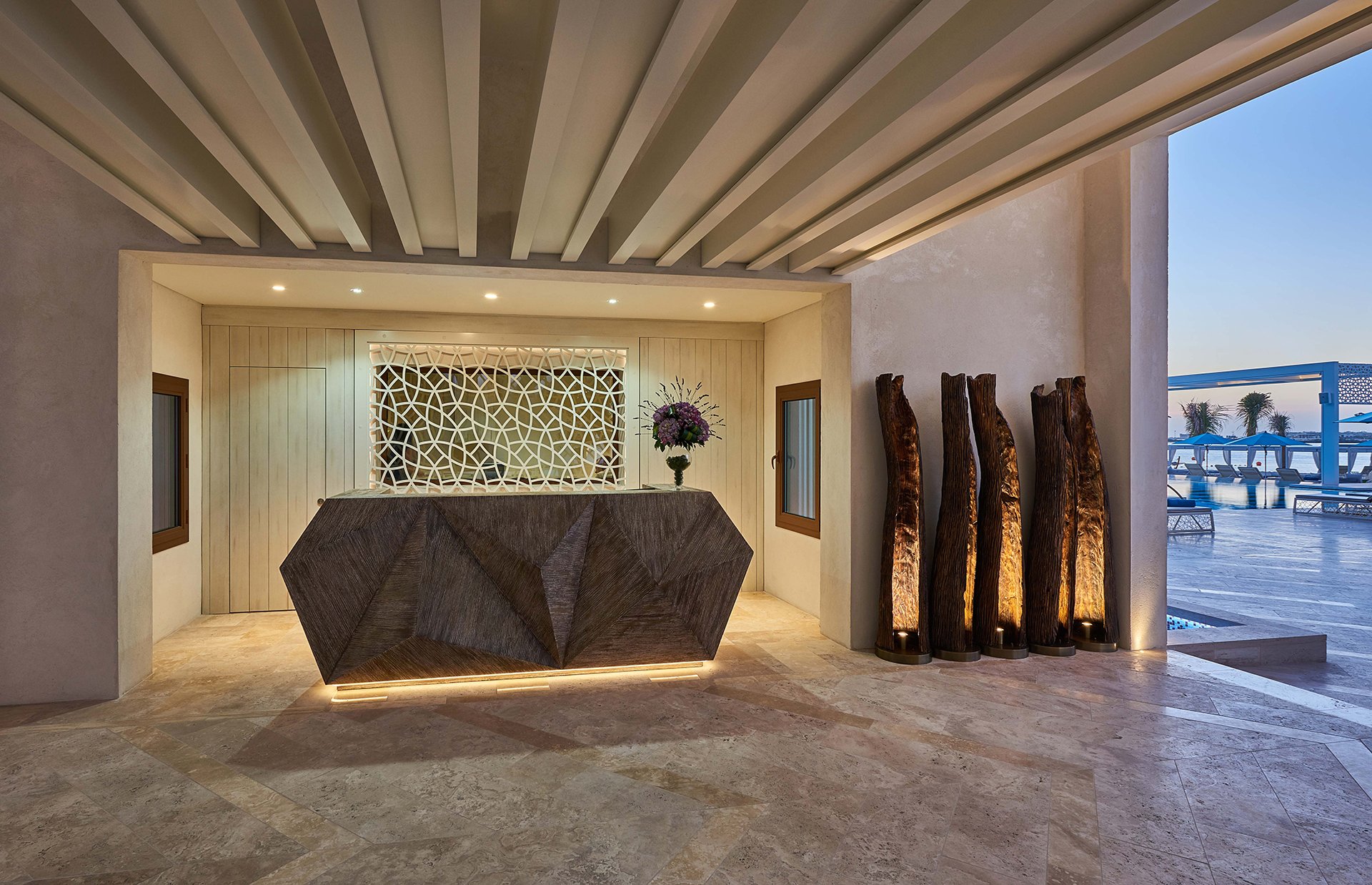
The style’s true authenticity unveils itself in a kaleidoscope of bold hues. Where modern interpretations may tread softly, genuine Art Deco interiors emerge unapologetically, in shades of beige, golden, cream, and yellow reigning supreme. Shades like ruby, turquoise and violet are used too. These hues, chosen with purpose and passion, evoke an atmosphere of timeless glamour and exuberance.
4. Intricate and Decorative Detailing With Dramatic Lighting
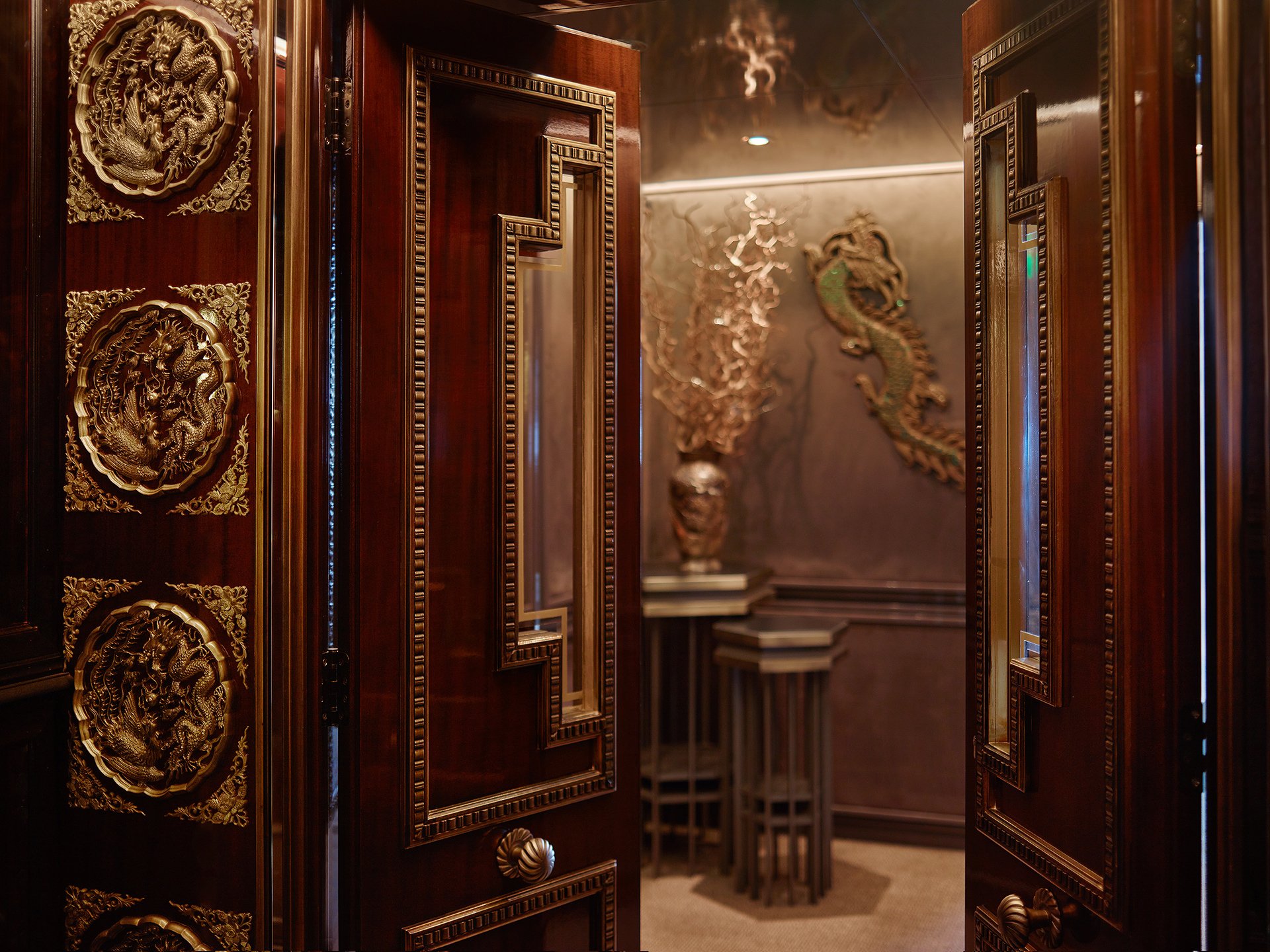
Dragon Restaurant, Turkey by GEO_ID Interiors; Photography credits: BORA SÜBAKAN
Elaborate patterns and motifs inspired by non-Western cultures and nature make Art Deco interiors what it is. When juxtaposed with grand light fixtures such as chandeliers, sconces, and lamps, they imbue spaces with an air of timeless glamour, seamlessly offering delicate elegance. Each intricate detail, illuminated by the soft glow of these luminous accents, transports observers to escapes with understated luxury.
Cues: Adapting Art Deco Interiors
While not every modern space may seamlessly embrace the style’s opulent aesthetic, there are ways to infuse hints of Art Deco without overwhelming the senses. By carefully integrating elements of the style with subtlety and finesse, one can evoke its timeless charm without sacrificing the contemporary essence of the space.
1. Accentuate Your Space: Enhance with Focal Points and Statement Pieces
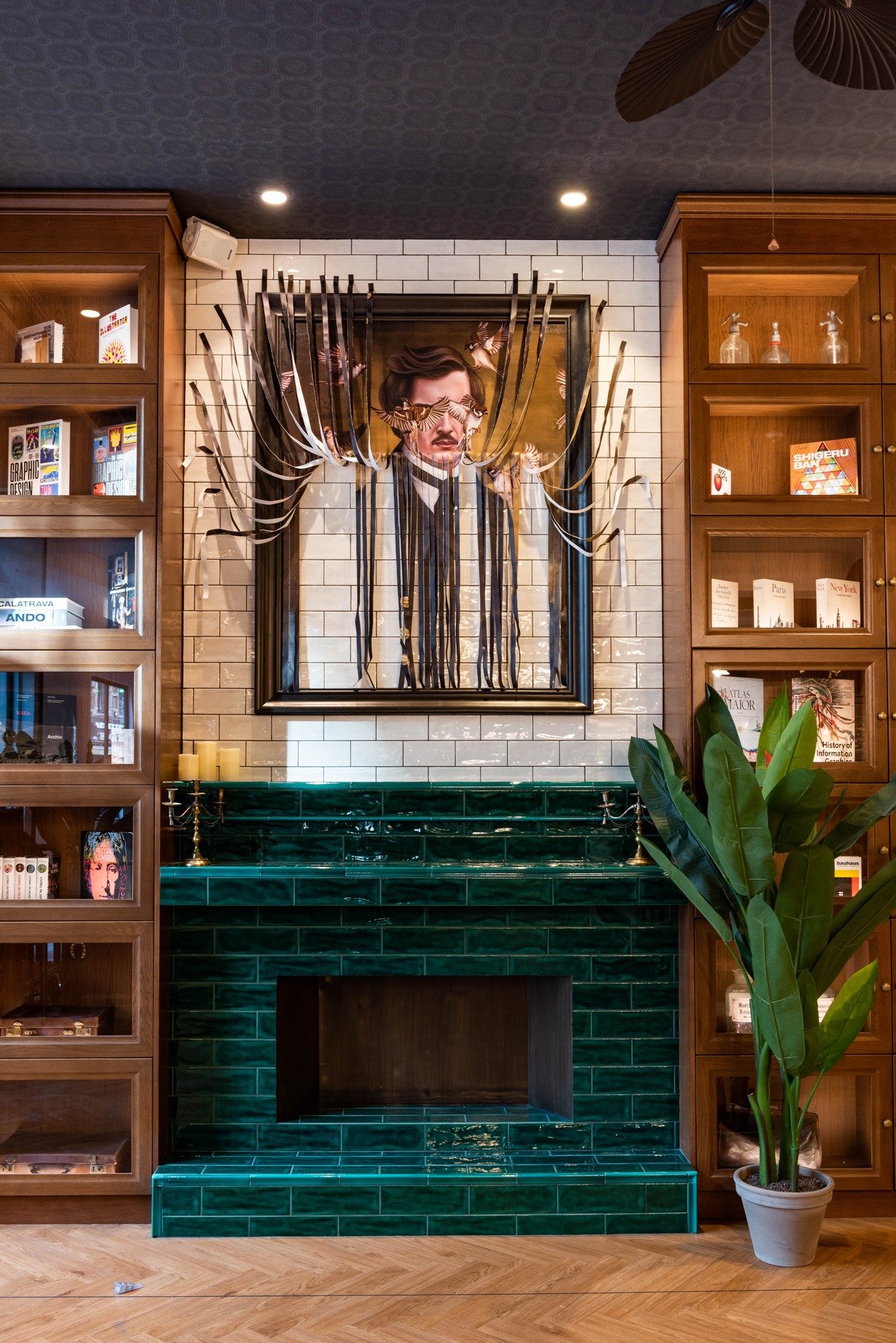
Craves Hotel, Brussels by Saar Zafrir Design; Photography Credits: Jan Verlinde Photography
Opt for a striking gold geometric rug or a luxuriously draped curtain, or perhaps introduce a captivating chandelier that casts an enchanting glow. Thoughtfully select a few design pieces or a significant one to add a bit of Art Deco to any kind of space. It’s about letting the style complement the modern aesthetic, without using it in entirety.
You can also incorporate Art Deco interior accessories such as mirrored trays, decorative boxes, sculptural vases, or geometric sculptures to add layers of visual interest and personality to the space. Avoid florals, frills or plaids.
2. Harmonising Tradition with Innovation
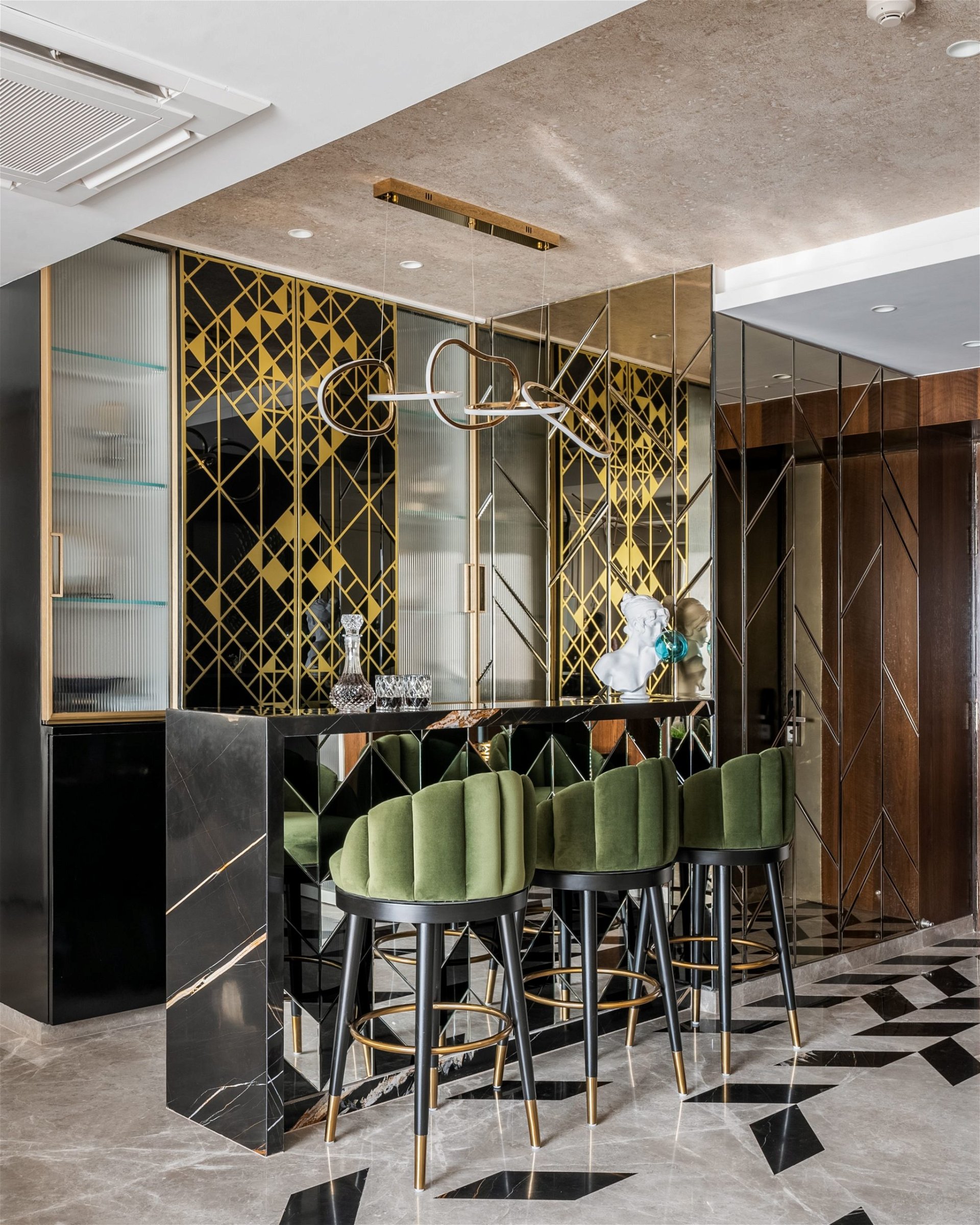
Blend Art Deco elements with distinctive pieces such as vintage sculptures, metal artwork or souvenirs boasting a subtle metallic allure. Art Deco interiors’ inherent modernism offers a versatile canvas to tailor to the room’s character, seamlessly merging with contemporary elements for a harmonious fusion of styles like Eclecticism.
While you take inspiration from its history, complementing it with individual expression of the space keeps it in vogue even today. It is about mixing the old with the new. You can also give way to more vertical space like the 20th-century buildings by using tall drapes, furniture, and vertically painted patterns. Don’t forget to pay attention to detail and add motifs and geometric patterns through wallpapers, textiles, etc.
3. Embrace Metallic Accents and Bold Colours
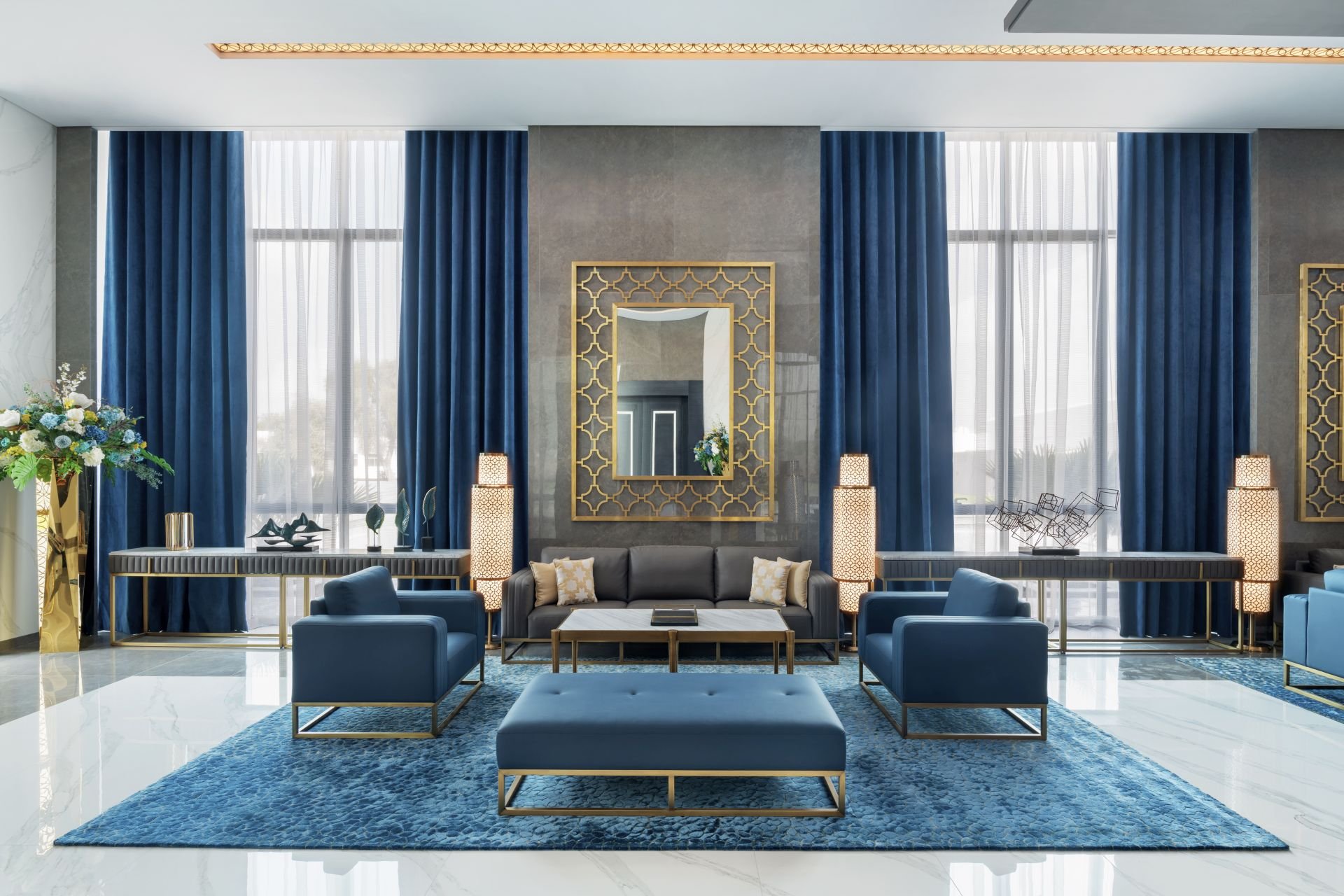
Embrace the richness of gold, the sophistication of silver, or the warmth of brass, seamlessly weaving these luxurious finishes into your furniture, lighting fixtures, and accessories. This glimmer is fundamental to Art Deco interior design.
To achieve a harmonious balance, consider complementing the metallic tones with muted or monochromatic palettes. Introduce depth and texture by incorporating solid blocks of contrasting colour through statement pieces like sofas and cushions. Don’t hesitate to invest in large-sized items.
Art Deco Interiors: A Transendence
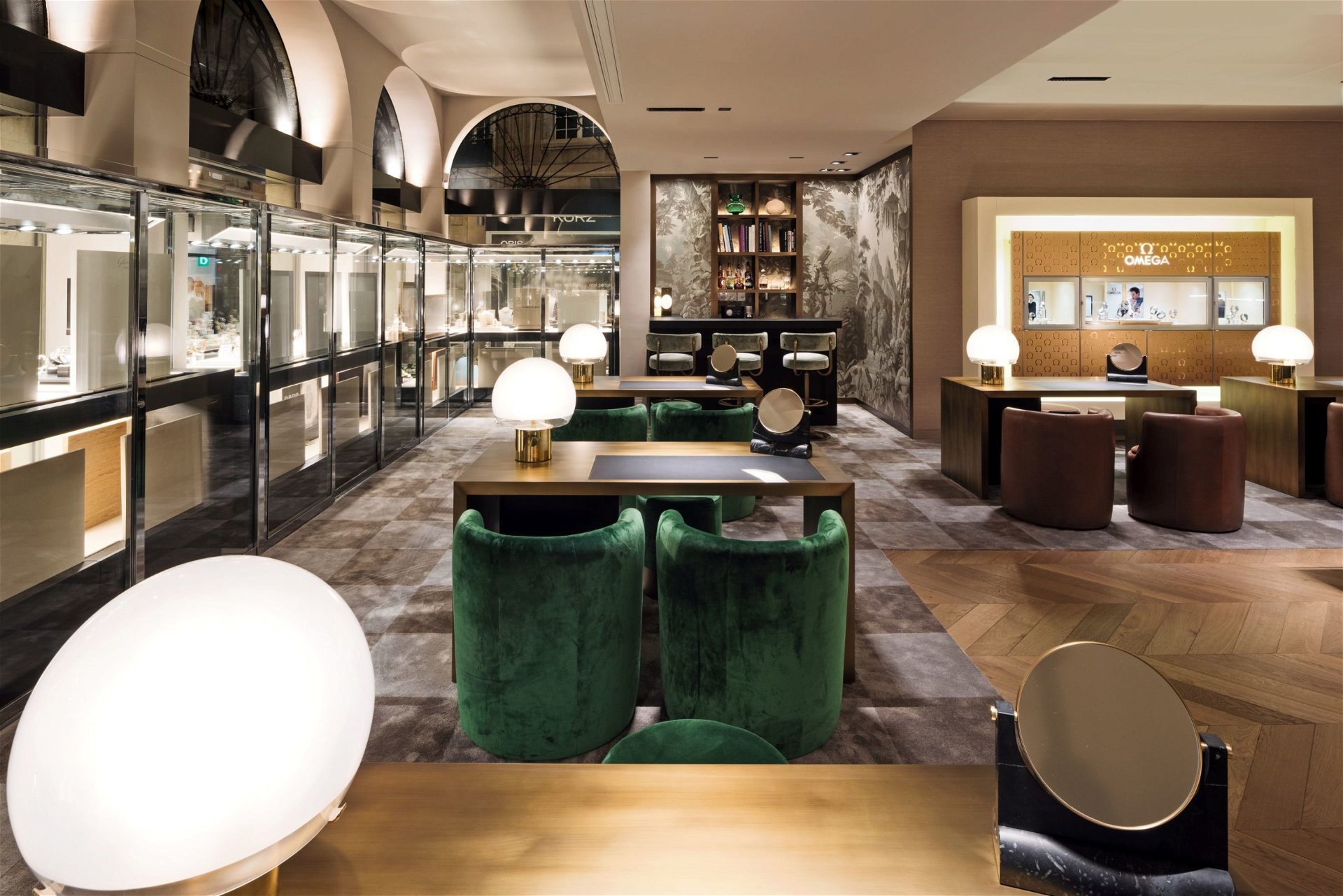
Art Deco Interiors transcends mere design; it’s a dynamic movement permeating diverse realms from automobiles to clothing, even influencing mindsets. In the 21st century, it embodies the philosophy of ‘living larger than life’ without appearing too gaudy. Because of its ability to be adaptable and versatile, Art Deco interpretation would keep changing with time, almost always reflecting the pulse of the era in a subtle yet powerful way.

